"It's not about the certificate, it's about the skills."
—— Poster in the Schull Sailing Centre
Over the weekend, I had a chance to train with some of the strongest paddlers around on a Level 4 course led by Jon Hynes, Director of the Kinsale Outdoor Education Centre and Ireland circumnavigator.
We got after it in massive conditions near Schull, West Cork. This focused training session revealed every weakness and put every strength to the test in a sea state beyond anything I would seek out on my own.
Jon’s video (below) captures the vibe.
“So cold… never paddling again”
The main scenario for Day 1 was a simulated evacuation of hypothermia casualty. We had to cross Long Island Sound in a rafted tow to a landing spot 1KM away where we could meet emergency services. There was a strong breeze blowing against a tidal current, which we had to factor into our navigation.
I was the “medic” in the scenario, so my boat was rafted with the casualty’s. I kept him upright and poured him sips from a thermos while three of the others towed us across the sound.
My buddy David, the casualty, stayed in character, muttering the whole time, “this is crap… so cold… never paddling again.”
The scenario wasn’t over ‘til we had David in a bivy inside a group shelter where he would eventually warm up in a real emergency.
Lunch on the rocks
Lunch back at the sailing school would have been too easy. Instead, we picnicked on a rock at the mouth of the harbor with waves breaking on it. One by one, we practiced swim landings, hauling in our kayaks with tow lines. With the boats high and dry and ropes squared away, we took sandwiches and tea from our hatches and huddled like seabirds in the wind and spray.
“No epics”
On Monday morning, Jon was able to stick around for a more informal half-day session. The wind had died down a bit in the night, but a massive swell was still running. After weeks of storms, the dominant swell had built on top of an already well-developed sea state, a phenomenon like preheating an oven that generates much bigger waves than the forecast might indicate.
You can judge the wave heights for yourself based on that video. For reference, the white beacon on the rocks is 16M (52 feet) high. The wave buoys were reading 4M+, but the reefs probably stood the breaking waves up higher than that.
As we paddled into the rock garden to play in the surf, Jon warned us, “no epics out here.” If anyone ended up taking a swim, a stiff offshore breeze would have blown them across the channel into an even heavier surf break.
It wasn’t long before someone swam after taking the biggest set of the day right on the head. You can see her paddling into it after the 3-minute mark in the video. Luckily, we had been practicing rescues on Sunday. We were almost textbook when we had to do one for real. My job was to act as a sea anchor, keeping us stationary and head-to-wind, paddling as hard as I could while towing the raft of kayaks involved in the rescue.
Gear notes
Sessions like these test your gear as well as your skills. Two pieces of kit were absolutely clutch over the weekend.
The Kokatat Storm Cag - During the hypothermia scenario, David and I had to bundle up since we weren’t paddling to keep warm. I borrowed a Kokatat Storm Cag, an oversized poncho that fits over all my gear and around the spray deck of my kayak. It has a fleece pocket for keeping your hands warm, and zippers that let you reach under the cag to access your gear in a hurry. I couldn’t believe how warm it was. I’ll definitely pick one up for the trip.
My Stanley thermos flask - This time of year, a flask filled with a hot beverage isn’t just nice to have, it’s a mandatory piece of safety gear. Everything you may have heard about not feeding a hypothermia casualty is nonsense. Your body needs fuel and hot fluids to warm up… And coffee makes the boat go faster.
Thanks for reading,
-Charlie
Thank you to Mike Jones for coaching and guidance.
Kokatat is the official gear sponsor of The Lap.
The lap will be fueled by Resilient Nutrition’s Long Range Fuel and bars.
Expedition coffee by 3fe.
CH Marine will be providing a VHF radio and other safety equipment.




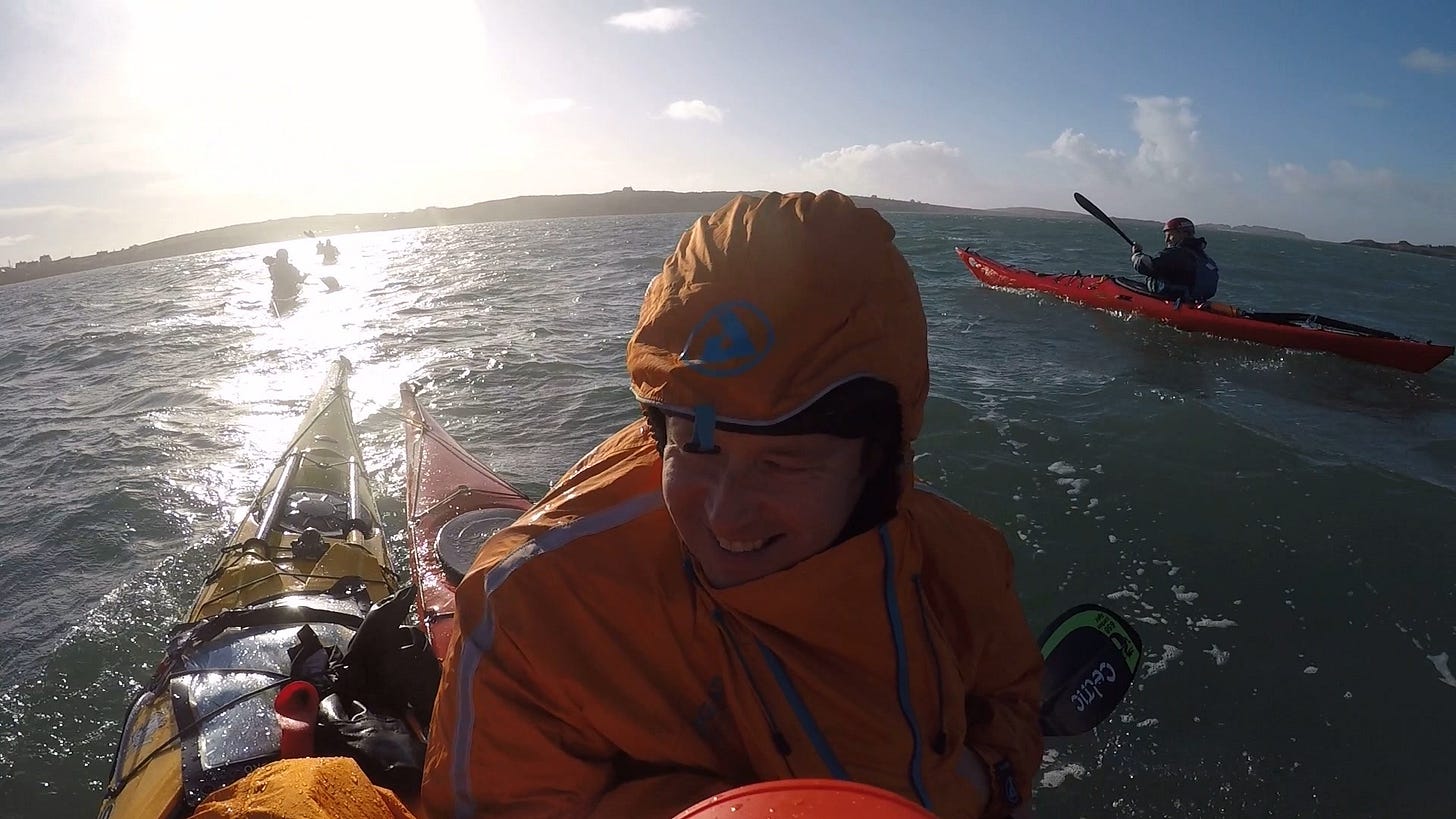


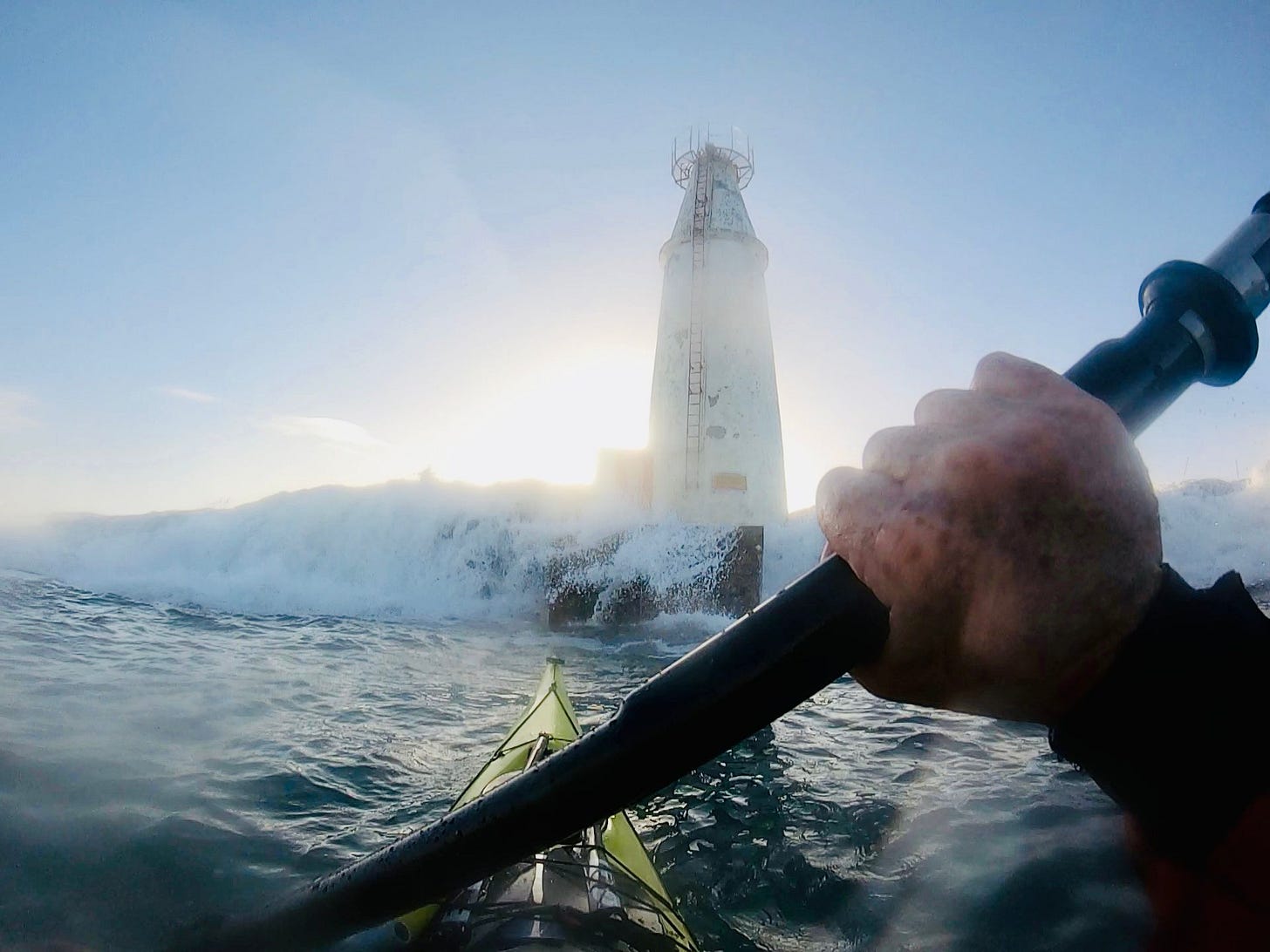
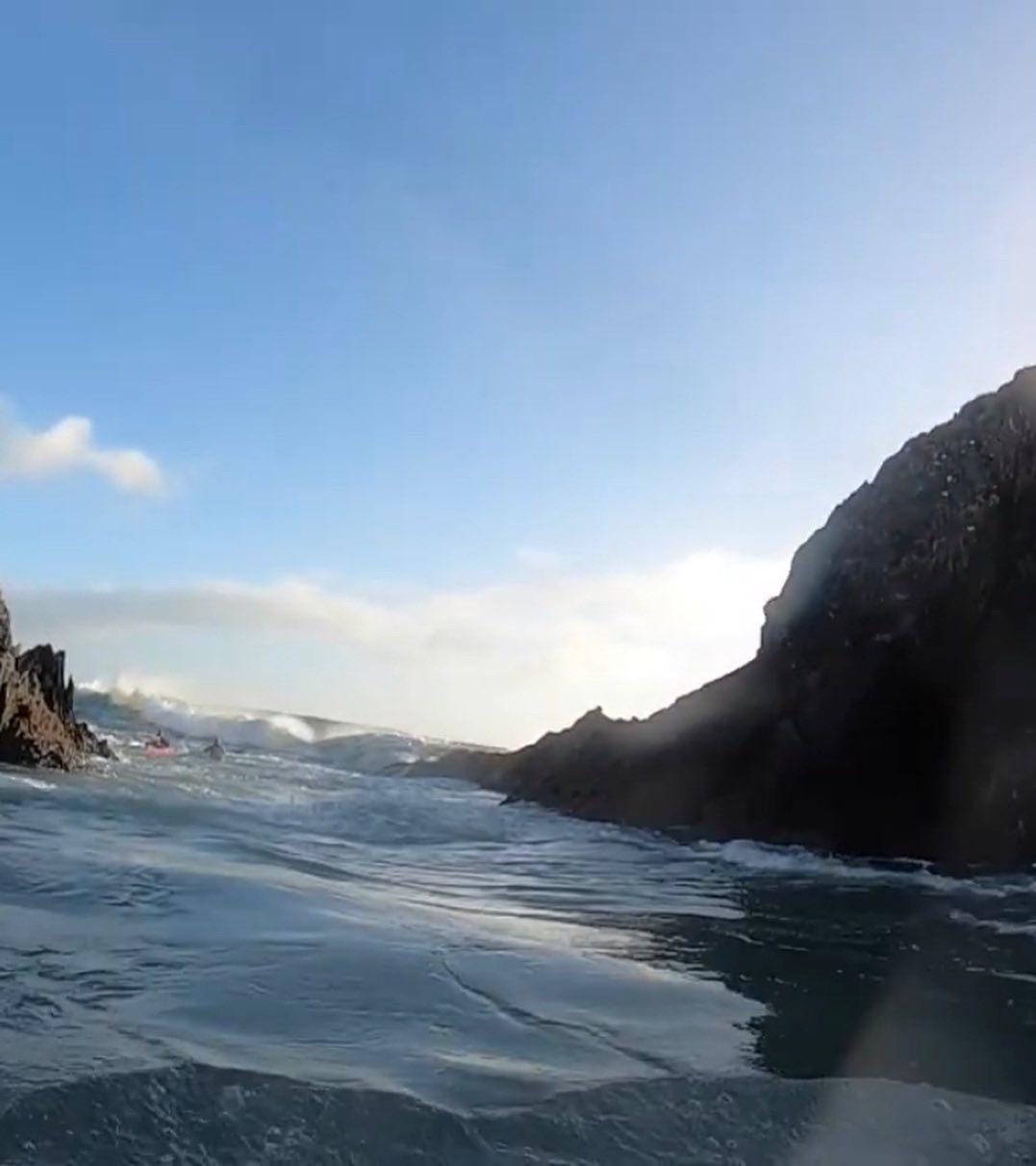

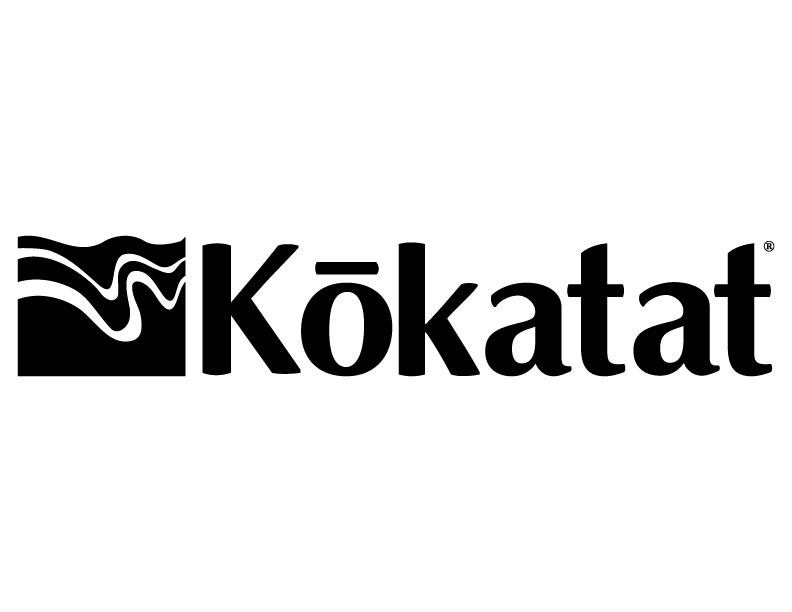
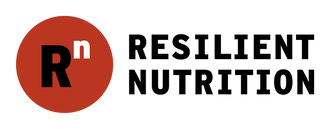


Thank you for the nightmare. I envision myself in those situations in my 9.5 ft open cockpit rec kayak and freak out.
I am going to have to dust off my Stanley Bottle. Things are classic and rugged enough for previous generations. Tremendous video. I’d freak out for sure.